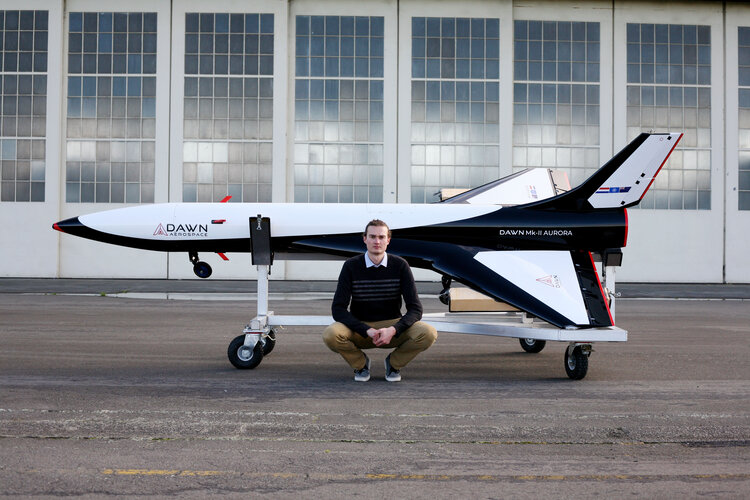Space launch provider Dawn Aerospace announced it had received €385,000 to develop an additively manufactured combustion chamber for high performance and high combustion pressure rocket engines. The company said the work will involve new 3D printing processes and materials. The new contract comes from the European Space Agency (ESA), under its Future Launcher Preparatory Program (FLPP), which is instrumental to Europe’s strategy for access to space. ESA’s FLPP oversees research to foster new launch technologies, lightweight and high-performance systems, reusability, low-cost structures, and green launch systems.
Additive manufacturing (AM) offers an excellent opportunity to reduce the cost, weight, and part count of rocket engines. Many startups and aerospace manufacturers are leveraging 3D printing to create rocket components at lower costs and time. For complex and crucial rocket engine parts, like combustion chambers, 3D printing technologies are ideal to make the parts, which must withstand a highly pressurized environment and extremely high temperatures that soar to over 5,000°F. The inherent capabilities of AM enable the most complex designs which would otherwise be impossible to achieve using traditional manufacturing techniques, like CNC milling machines and hand welding.

Dawn Aerospace CTO and Co-founder Stefan Powell during the unveiling of the Mk-II Aurora. Image courtesy of Dawn Aerospace
The company said that commonly printed materials such as stainless steel, Inconel, and titanium lack the thermal conductivity required for ultra-high-performance combustion chambers. This is why the planned work under the development contract involves novel 3D printing high melting temperature and high thermally conductive materials, with optimized topologies, leading to high-performance and lighter rocket engines.
In fact, Composites Manufacturing reported that Dawn Aerospace engineers will use composite materials for 3D printing the rocket engines to provide the thermal conductivity needed to protect against the elements of space travel, something that traditionally printed materials, such as titanium and stainless steel, lack.
“We are proud to work in cooperation with the European Space Agency,” said Jeroen Wink, Dawn Aerospace CEO. “This is important work that will lead to higher-performance, more reliable rocket engines that can fly to space hundreds of times without refurbishment.”
Once proven, the high-performing, lighter engines will be implemented towards the Mk-II Aurora spaceplane, a sub-scale suborbital vehicle built to demonstrate Dawn’s core technology for daily access to space. The rocket-powered aircraft is the latest in a series that could one day deliver satellites and assets to, and return them from, space, capable of making multiple return trips to suborbital space per day.
In July 2020, the company unveiled the Mk-II concept spacecraft, which approaches the goal of sustainable commercial spaceflight by promising flights to 100 kilometers and above before returning to land at an airport. If proven, the space vehicle will be able to fly and return for multiple trips per day, at a cost of roughly $50,000 per flight, enough to take scientific experiments to space. But Dawn has plans for an Mk-III iteration of its space plane that will be 60 feet long and capable of carrying heavier payloads to orbit, which will also require more sustainable and lighter rocket engines.
Based in New Zealand and the Netherlands, Dawn Aerospace is building same-day reusable launch vehicles and non-toxic satellite propulsion systems as part of its original mission to create a sustainable space-based economy. The startup wants to redefine the way we deliver hardware to space, position assets on orbit, and return products to Earth. For that to happen, they are building same-day Reusable Launch Vehicles that will not require specialized space-launch infrastructure for vertical lift-off. The company even said earlier this year that it’s reusable rockets could be taking off from the Oamaru Airport in the North Otago region of New Zealand, and heading into space later this year as part of the first unmanned test flights.
Research into horizontal launchers, like Virgin Galactic‘s SpaceShipTwo passenger spacecraft which is being piggybacked on an aircraft for its initial stage, is targeting suborbital flight attempts. Like Virgin, Dawn Aerospace also has ambitious plans, expecting its spacecraft to integrate with everyday aircraft in nearby airspace and launch as often and routinely as commercial aviation. It is also developing non-toxic high-performance propulsion systems for satellites of all sizes. For small satellites, they simplify systems and replace the poisonous and highly-regulated fuel, hydrazine. While for CubeSats, they plan to increase capabilities by supplying 1,000 times higher performance than electric-based propulsion systems.
Since its foundation, Dawn Aerospace has achieved revolutionary designs by using the latest in Computational Fluid Dynamics (CFD) analysis and AM. From concept development to product certification, all the work is done in-house to manage costs and meet the demanding schedules of the aerospace industry, like its satellite propulsion which is created using a combination of commercial off-the-shelf technologies and customized 3D printed parts. This latest contract awarded by ESA is one more step towards the company’s future as part of the space economy.
Subscribe to Our Email Newsletter
Stay up-to-date on all the latest news from the 3D printing industry and receive information and offers from third party vendors.
Print Services
Upload your 3D Models and get them printed quickly and efficiently.
You May Also Like
3D Printing News Briefs, January 15, 2026: Project Call, Sports Medicine, Aluminum Alloy, & More
In today’s 3D Printing News Briefs, America Makes announced the winners of a $1.1 million Project Call, Austal USA named a new Vice President for Business Development and External Affairs,...
US Army Awards Contract to Phillips Federal for Containerized WAAM Factories
Everything that the U.S. Army has been doing with additive manufacturing (AM) over the last year or so suggests that the branch is getting serious about deployable production systems. One...
Top 10 3DPrint.com Stories of 2025: Kickstarter, Consumer Goods, Bankruptcy, & More
As Vanesa Listek wrote, last year was a major turning point for additive manufacturing (AM), as the industry is working to sort itself out. Customers want proven use cases and...
3D Printing News Briefs, January 3, 2026: F-15 Replacement Part, Ice Trees, & More
Happy New Year! We’ve got an abbreviated 3D Printing News Briefs for you today, so we can all enjoy our holiday weekend but still keep up on the industry’s news....






























